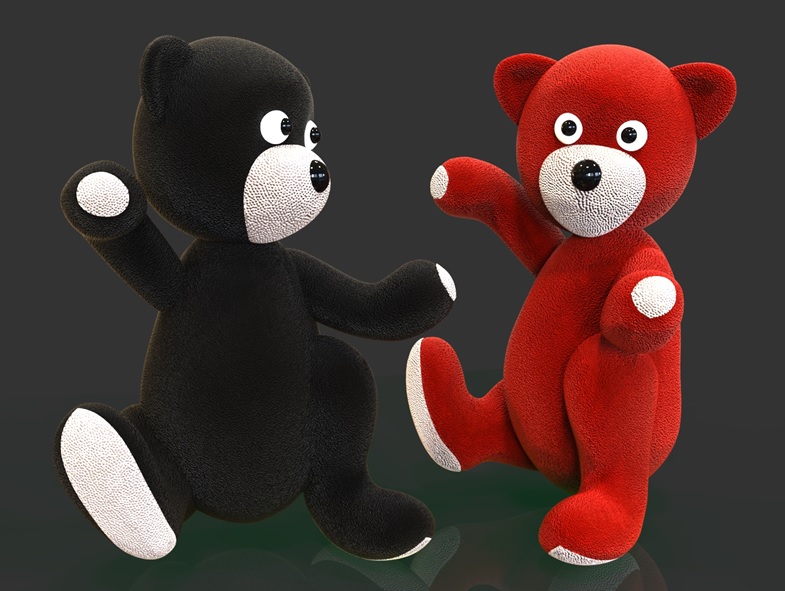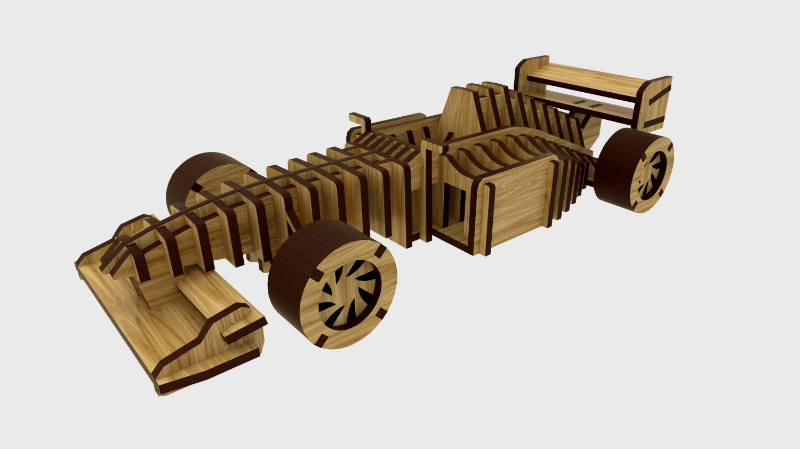Toys are a vital part of a child’s development because they are the treasures of childhood and help children to stimulate their imagination. But of the many toys that are available on the market, some are quite hazardous and can be dangerous for your child’s health.
According to a study by the Consumer Product Safety Commission (CPSC) in 2015, out of all toy-related injuries that were treated in U.S hospital emergency rooms that year, about one-third of the kids were under 5.
A good toy should not only match the stages of your child’s development and emerging abilities, but it should also be safe for their use. Choking is a common risk among children aged 3 or under because, at that age, they tend to put objects in their mouths. That is why it is vital for every toy manufacturer and CAD design service to follow guidelines and label new toys for specific age groups.
Though parents should always supervise their child when they are playing with toys, it’s up to the manufacturer to design kid-friendly toys that will be appropriate and safe for every child. So, let’s take a look at a few tips for designing toys that are safe for kids.

Tips for Designing Toys for Kids
- Be colorful: This is important because bright colors and children’s brands go hand-in-hand. If you want kids to be strongly attracted to your branding and designs, you need to harness the magic of the rainbow, because kids are usually attracted to the most vibrant colors of the color wheel in contrast to muted or neutral tones. Moreover, primary colors like yellow, blue, red, or secondary colors like green, purple, and orange will grab much more attention from a younger crowd than brown or a muted shade of pink, for example.
- Let cartoon characters be the face of your brand: Kids prefer animated toys, especially animated characters that will extend beyond their favorite Disney cartoons or Nickelodeon. Incorporating a character or mascot into your design and branding can strengthen children’s connection to your product because a cartoon character is generally appealing to children. Adding a character will give your brand a high dose of personality and make it much more memorable.
- Focus on the parent too: When designing your product, don’t be oblivious to the parent, because no matter how kid-focused your brand is, it’s the parents who will bring out the cash to purchase it. If your design does not sit well with the parent, your business will suffer. It is vital to build your brand in a way that connects with both parent and child. This might be a little tricky, but it is possible. Let’s take, for instance, the Little Monster brand – this sports program did a great job adding design elements that appeal to children while also designing in a way that draws in the parent.
- Be aware of safety issues: It is also essential for a manufacturer to be conversant with the U.S Consumer Product Safety Commission (CPSC) regulations. Provisions in the Child Safety Protection Act, which is implemented by the CPSC, require labels on the packaging of balloons, balls, marbles, and other toys intended for children 3 years of age or under and include a warning against choking hazards.
This provision also bans balls smaller than 1.75 inches in diameter for children under three years of age. In cases where choking does occur, the Act also requires importers, distributors, manufacturers, and retailers of latex balloons, small balls, marbles, toys, and games containing these items or small parts to report to the CPSC. More of the regulations for designing child-friendly toys can be found on the CPSC website.
Sample Toys for Children of All Ages
It is essential to consider the age of a child when designing a toy for them because some toys can be safe for older children but quite hazardous for the younger ones. That is why many toys have age-range information on their packaging, which can be significant for safety. Here are some guidelines for age-appropriate toys for the various age ranges:
- Toys for a young infant – 0 to 6 months: These children are very young and fragile and are always fascinated with sound, movement, simple shapes, and white visuals. Their toys should be the sturdy type that can be squeezed, kicked, grasped, or shaken, such as soft dolls, teething toys, squeeze toys, textured balls, and board books. Audio items such as recordings of lullabies, simple songs, nursery rhymes, and poems are also appropriate.
- Toys for older infants – 7 to 12 months: These infants are now mobile and can move around, whether by scooting, rolling over, or crawling. They can also pull themselves up to a standing position. You can consider designing toys such as dolls, plastic and wood vehicles with wheels, water toys, puppets, nesting toys, push and pull toys, large balls, and soft things to crawl over for this age range.
- Toys for 1-year-olds: These kids can walk steadily and say a few words. They like to experiment at this age, but this is when adults need to monitor them more to keep them safe. This age range has various toys they can engage with, such as:
- Recordings with rhymes and song, simple stories and pictures
- Board books with photographs of real objects and simple illustrations
- Toys to create with like washable markers, large paper, and crayons
- Toys they can use to pretend with, like dress-up accessories, puppets, plastic animals, baby carriages and strollers, plastic and wood vehicles and so much more
- Toys for 2-year-olds: Toys for this set of kids shouldn’t differ from those designed for a 1-year-old but can be bigger and more technical. At this age, they tend to learn more about socialization and engage in lots of pretend play. Go for designs that get them solving problems, like objects to sort, word puzzles, wood puzzles, or picture books with more details than books for younger children. Again, CD and DVD players with a variety of music are appropriate, as well as ride-on equipment, low climbers with soft material underneath, and large and small balls for kicking and throwing
- Toys for 3-year-olds: This age group is called kindergarteners or preschoolers, and they tend to ask a lot of questions. Toys for 2-year-olds are also relevant for them, but you should consider making your designs more technical. You can add instruments such as xylophones, rhythm instruments, keyboards, maracas, and tambourines. Then there are sand and water play toys, transportation toys, construction sets, child-sized furniture, dolls with accessories, puppets and simple puppet theatres, key shears, counting bears, as well as collections of plastic bottle caps and other smaller objects to sort by width, length, height, shape, color, smell, and quantity.

Guidelines for Designing Toys for Kids
Generally, it is not always about designing the fanciest toy; it is about creating the toy that will be safe. When designing a new toy, always ensure you:
- Produce a well-made toy: It is essential to make sure all small parts such as batteries, buttons, yarn ribbons, eyes, beads, and plastic parts are secure and the product is labeled with any warnings it needs to carry.
- Avoid designing toys with a string or cord longer than 12 inches: These can be very dangerous as a long cord can quickly wrap around a young child’s neck, which can cause strangulation.
- Keep your designs simple: The best toys are those that allow a child to use his or her imagination. For instance, stuffed animals or dolls that sing, talk, or direct kids to press certain buttons to take charge of the play situation, when the child should be the one directing the action.
- Be cautious about designing toys with small magnets: Small, powerful magnets are often used in toys and if not careful, may fall out of the toy and be swallowed by a young child. Multiple magnets can be attached through intestine walls, twisting and pinching the intestine, which can cause blockages, infection, or holes if not discovered and treated on time. Many agencies recommend keeping toys with magnets away from kids under age 14 because of the number of reports of accidents involving children who swallowed magnets, including 11 incidents that resulted in surgery.
- When designing your toy, ensure you stick to design requirements for a specific age group: Knowing the abilities and maturity level of that age group and labeling the toy appropriately will help increase its marketability. For instance, children under age 4 and even some 6-year-olds aren’t mature enough to handle toys that have projectiles.
- Avoid designing toxic toys: These are very dangerous for children. Chemicals to avoid include plasticizers, which are used to make plastic more durable and flexible, lead, mercury, cadmium, and arsenic. These can sometimes be found in items such as children’s jewelry, dolls, and stuffed animals.
- Be practical and think big on the kind of toy you are designing: Ensure that toys or toy parts are bigger than a child’s mouth, especially with toys intended for children under 3 years old.
Toys are treasures of childhood, but if not carefully designed, can be hazardous for a child. Knowing all the guidelines when designing kid-friendly toys will help keep children safe, ensure happy childhood memories, and help you build up an excellent reputation as a toy manufacturer.
If you’re looking for help designing your child-friendly toy, we at Cad Crowd can help. We have a network of confidential, pre-vetted product design services, including some of the best freelancers in the world. Whether you’re looking for help conceptualizing a product or designing a 3D model, contact us for a free quote.
